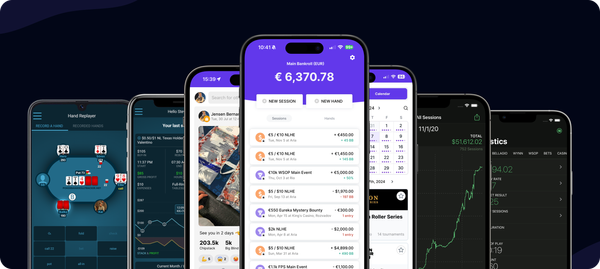Understanding When to Move Up in Stakes: A Data-Driven Approach

Moving up in stakes is one of the most critical decisions in a poker player's career. Many players either take the leap too soon and risk going broke or stay too long at lower stakes and miss out on maximizing their earnings. The key is to base this decision on clear, trackable data, not just emotions or short-term results.
The Biggest Mistake - Moving Up Too Soon
One of the most common bankroll leaks is jumping stakes too early. Players often move up after a heater, assuming their win rate will translate to higher stakes. Others take desperate shots after a downswing, hoping for a quick recovery.
This can be a disastrous mistake. Higher stakes come with stronger opponents, bigger swings, and tougher mental challenges. Without a solid foundation, moving up too soon can wipe out months of progress in just a few sessions.
Key Metrics to Consider Before Moving Up
Instead of making impulsive decisions, rely on hard data to determine when you're ready to move up. Here are the most important factors to track:
1. Win Rate Over a Large Sample Size
- A positive win rate (bb/100) over at least 50,000 hands online or 500+ live sessions is a strong indicator of consistent performance.
- If your win rate is below 5bb/100, consider refining your game before moving up.
2. Bankroll Requirements
- Cash Games: At least 50 buy-ins for the next stake level.
- Tournaments: A minimum of 100 buy-ins due to variance.
- Sit & Gos: Around 75 buy-ins, depending on structure.
A properly managed bankroll ensures you can withstand swings and downswings without affecting your confidence or strategy.
3. Opponent Skill Level
- Observe games at the next stake level before making the jump.
- Compare the aggression, bet sizing, and player tendencies to your current stake.
- If the player pool is significantly stronger, consider studying and preparing more before moving up.
When to Take Shots at Higher Stakes
If your bankroll is close to the recommended level but not quite there, you can take partial shots instead of committing fully to the next stake.
- Mix in higher-stakes sessions while still playing your main level.
- If variance hits hard, drop back down before losing too much of your bankroll.
- Use these shots as a learning experience rather than an all-in move.
Final Thoughts
Moving up in stakes should be a calculated decision based on long-term data, not short-term results or emotions. The biggest mistake players make is ignoring bankroll requirements and jumping stakes too soon.
By tracking your win rate, bankroll size, and opponent difficulty, you can confidently take the next step in your poker career while avoiding unnecessary risks.
Ready to treat your poker like a business?
We’re building Pokerbase for you - to help you track sessions, manage your bankroll like a pro, and stay accountable so you can become the most professional version of yourself.
📲 Start tracking smarter today: Download for iOS & Download for Android
🚀 Join us on Instagram for insights & behind-the-scenes updates: @pokerbase.app
😎 Follow us on the Pokerbase platform: @pokerbase
🔔 Your journey to becoming a better poker player starts now. Let’s build it together.




